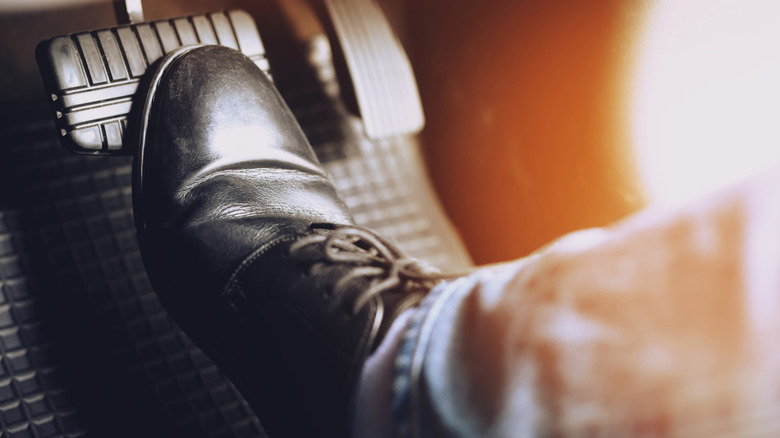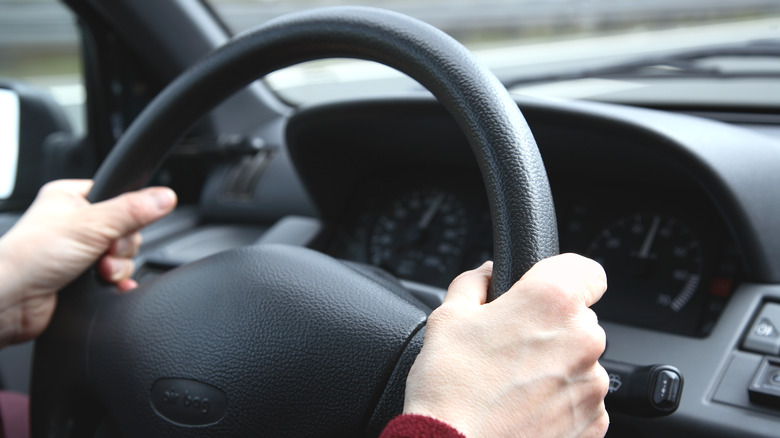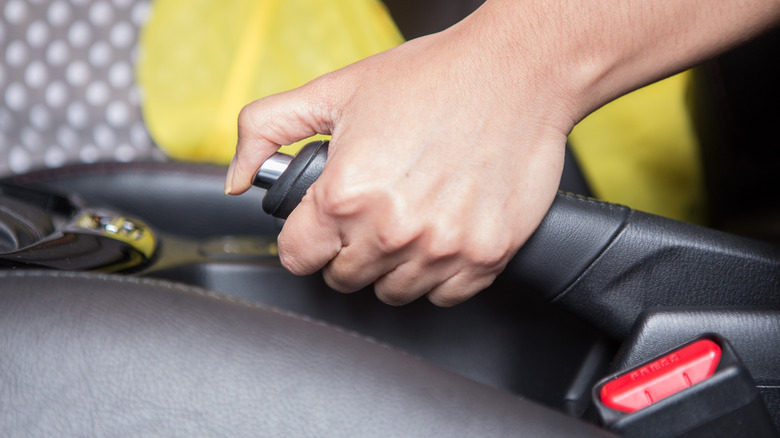
Rattankun Thongbun/Getty Images
If you’ve been driving a car for a while now, certain things come second nature. You open the door, get in the seat, adjust it accordingly, close the door, fix your mirrors, and put your seatbelt on. When you’re in motion, all the things you learned during your stint with driver’s education should automatically come into play — you signal before you turn or switch lanes, you gradually stop when approaching a red light or stop sign, you routinely check your mirrors and your blind spots to make sure you’re still on course.
No matter how experienced you are in driving a car and no matter how repetitive the steps to maneuver a vehicle may seem to you, you still need to be aware and alert enough in case you run into a situation that can yield a potentially disastrous outcome. Apart from needing to be prepped for the likelihood of another car bumping into you causing a car accident, you should also have a portion of your situational awareness aimed toward unexpected car malfunctions.
One alarming example of the latter is when you prepare to do a full stop and discover that your car brakes are not engaging. According to a 2015 survey (PDF) by the National Highway Traffic Safety Administration, brake failure accounts for around 22% of car crashes that occur annually. So what do you do in that situation? Below are some things you can try to help your car slow down and give you time to get to safety and call for assistance.
Stay calm and don’t panic

Bim/Getty Images
Not freaking out when something inexplicably stops working the way it’s supposed to while you’re in a moving vehicle is both the most difficult and the most crucial thing you need to do. Take a couple of deep breaths and keep in mind two goals: you need to slow your vehicle down gradually and eventually stop at a place of safety away from other vehicles. You may be tempted to pull the emergency brake or take the key out of the ignition to shut the car down, but neither of those things will help you slow down safely. In fact, employing these moves too early — you can do them later when you’ve successfully decelerated — and at a high speed may cause your car to skid, leaving you with no control over your vehicle.
According to various insurance companies, driving school, and state driver and motor vehicle services websites online, most modern vehicles are equipped with a split braking system that controls your front and rear wheels separately. This is to reduce the potential of complete brake failure. Before you do anything else, take your foot off the gas and try hitting the brakes again, using firm pressure all the way down. You can also try pumping the brake pedal several times to build enough pressure that could potentially stop the vehicle.
It’s also important to warn fellow drivers of your emergency. Turn your hazard lights on and honk your horn if you have to. If you’re able, signal and try to pull off to the side of the road you’re on to reduce the likelihood of involving other cars in an accident.
Slow down as gradually as possible

Chalongrat Chuvaree/Getty Images
If trying the brakes again isn’t working, the next thing you need to focus on is making sure your transition to a complete stop is slow and steady. Again, any move to abruptly stop can cause your car to skid. Instead, downshift to a lower gear in stages. If your car is running on automatic transmission, taking your foot off the gas should cause the downshift already, but you can also use the +/- on the gear stick. Avoid shifting down all the way to neutral right away — in some cases, it could remove your engine’s braking effect, which would be essential in this scenario.
Once you’ve lost a bit of speed, now you can try using your emergency brake. Again, do it carefully without aggressively pulling on it, so your car’s wheels don’t lock up. Employing the parking brake will likely cause the car to skid a bit, but when done in a gradual manner, it shouldn’t get too out of control. Prepare to release the emergency brake slowly once you feel the car skidding. No matter what, keep your eyes on the road as you do this and try to only turn the steering wheel in small increments when necessary to avoid hitting obstacles.
Prioritize life over your vehicle

Coffeekai/Getty Images
If you lose the ability to brake while driving on a fairly empty street, you should be able to cautiously use all the suggestions thus far to slow your vehicle down to an eventual stop. However, if you’re on a highway driving at full speed, safely slowing down may be a more challenging feat. Do your best to navigate to the slow lane and make sure you have your hazard lights on when you get there. If you are having trouble slowing down, rather than hit other cars, opt to steer toward a guard rail or divider and scrape the side of your vehicle on it as a means to decelerate. When it comes down to it, damaging your car is the preferred option over suffering through a head-on collision.
Once you’ve slowed the car down, it’s important that you get off the road you’re on as quickly as possible to avoid getting hit by other drivers. Pull into the shoulder or, if possible, someplace with less traffic like a parking lot. Once your car is at a crawling pace, you can try shifting into neutral or using the emergency brake again. If necessary, as a last resort, you can turn your ignition to the off position, but avoid putting it in «lock» as this may also lock your ability to steer.
After your vehicle stops, call for emergency services right away and get your vehicle towed. Do not attempt to drive your car a second time. In addition, make sure you get your car brakes repaired by a professional before hitting the road once again.